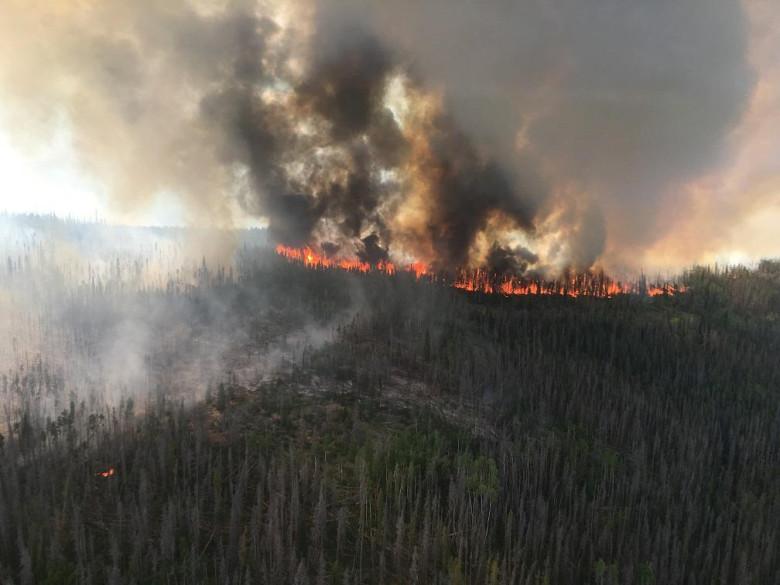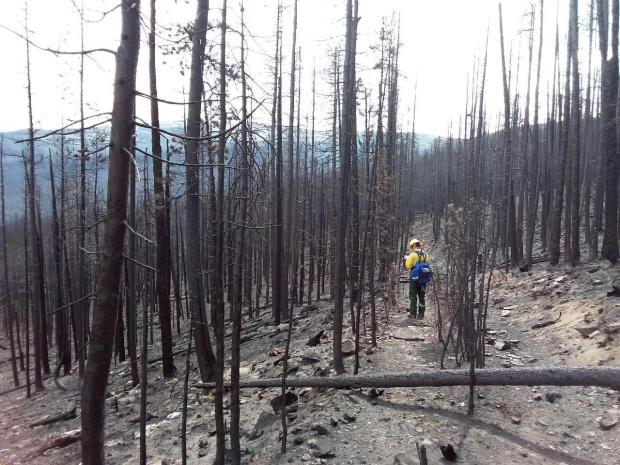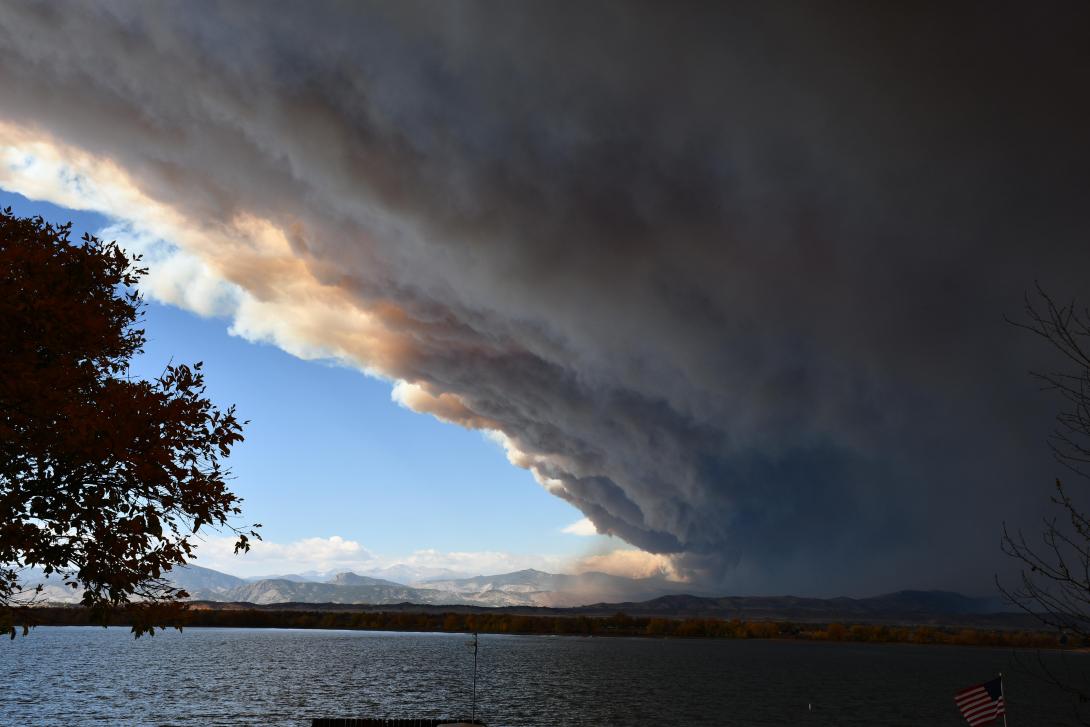Wildfire in Colorado
Full Article
Coloradans have coevolved with fire. From early indigenous people to Euro-American colonizers, to modern government agents, humans have influenced the direction of fire as much as fire has influenced the course of people. The fire-adapted landscapes we see in Colorado today, as well as the rash of huge blazes, are the direct result of these historical precedents.
Indigenous Peoples
Indigenous people first used fire in what is now Colorado in a variety of ways. Oral traditions from Utes, for instance, indicate that their ancestors lit blazes in the San Juan Mountains from earliest times up until 1920. They used conflagrations as a tool for clearing understory vegetation, which eliminated cover for competing predators such as wolves and fleeing prey like deer. The Plains Nations of eastern Colorado, including the Cheyenne, also set frequent low-intensity burns to promote the growth of tender grass shoots favored by the bison they hunted. As indigenous populations and climatic conditions established historic fire regimes, neighboring flora and fauna adapted to these blazes. For example, many conifer forests depend on wildfire burns to regenerate in montane ecosystems. Ponderosa pine trees (Pinus ponderosa), which cover about 2 million acres in Colorado today, developed over millennia with low-intensity ground fires. These conflagrations produce ideal conditions for pine germination by eliminating rival foliage. In addition, the flames’ penetrating heat causes pinecones to release their seeds. Both Colorado’s people and environment came to depend upon fire.
Colonization
Fire suppression, however, has inhibited these evolutionary processes. Following Euro-American settlement initiated by the Colorado Gold Rush of 1858–59, whites worried about dwindling timber resources in Colorado due to mining, logging, and railroads. The government solution was to conserve timber stands through scientific management. In 1885 Colorado established a state forestry commission in order to protect trees until they reached market, which often involved the exclusion of fire from landscapes. Similarly, in 1905 President Theodore Roosevelt began to designate vast sections of the Colorado Rockies as national reserves under the newly organized US Forest Service (USFS). These included the Arapaho, Gunnison, and Pike National Forests.
After the 1910 Big Blowup, a massive wildfire that consumed approximately 3 million acres in Washington, Idaho, and Montana, suppression became the dominant national fire policy in the American West. The USFS reinforced this notion in 1935 with its so-called 10 a.m. policy. The strategy stipulated that any wildfire must be under control by 10 a.m. the day after a fire was reported. In sum, a variety of factors combined to produce a federal policy meant to curtail all wildfires and minimize damage to Colorado’s fire-prone landscapes. This belief became institutionalized by the USFS in 1944 with the cultural symbol of Smokey Bear and his famous “only you can prevent wildfires” message.
From Fire Science to Firewise
In the 1960s and 1970s, fire ecology studies rediscovered that wildfires were beneficial to many environments. The National Park Service’s 1963 Leopold Report, for instance, argued in favor of periodic burnings within park units in order to rehabilitate dilapidated forests. Three master’s theses from Colorado State University published between 1975 and 1979 followed the Leopold Report’s path by suggesting the potential advantages of a reestablished fire regime for habitats within Rocky Mountain National Park and other forested areas. As a result of new scientific research, the USFS changed its policy to permit certain wildland fires, and the agency even promoted some prescribed burns.
Despite the altered views of the USFS, many Coloradans continued to desire all-out fire control and suppression. A desire to live close to nature, combined with post–World War II affluence and automobility, permitted development to encroach on fire-adapted landscapes such as forests and grasslands. One example of this type of residential growth is the Burland Ranchettes subdivision west of Denver. By 2000, almost one-quarter of all Coloradans dwelled in the forests of the wildland-urban interface (WUI). Although science has shown the benefits of wildland fire, the public has remained slow to catch on.
Fire seasons in the 1980s turned out to be catalysts for policy action. In 1985 wildfires burned down nearly 1,400 homes across the United States, and in 1989 fire burned 47 houses in Colorado. The US Department of the Interior, the USFS, and the National Fire Protection Association teamed up to address problems associated with WUI and wildfire. The three entities created an outreach program called Firewise Communities to educate homeowners on wildfire issues. The Firewise program, implemented by the State of Colorado in the early 1990s, placed the initial burden of fire prevention on homeowners themselves. The program educated residential landholders about the risks associated with living in fire-prone landscapes and promoted the establishment of “defensible space.” This latter goal entailed property management practices that safeguard against fire. In Summit County, for example, the local government mandated that anyone building houses in forested areas must use fire-retardant materials, install protective sprinklers, remove nearby trees, and keep enough water to douse out-of-control blazes. These precautionary measures formed perimeters for firefighters attempting to save houses. From these initial efforts, Colorado has now founded more than 100 Firewise Communities.
Climate Change
Global warming threatens future development in the Wildland-Urban Interface, as wildfires become more frequent and severe. Human-induced climate change, initiated from the burning of fossil fuels since the Industrial Revolution, has upset historic precipitation and temperature patterns across Colorado, the United States, and the world. In addition, forest growth accumulated during a 100-year policy of fire exclusion has primed Colorado's forests for the rash of huge fires seen in the twenty-first century. The ten largest fires in state history have all occurred since 2000, with three record-breaking blazes in 2020 alone. Scientists are beginning to understand that, under current climate conditions and trends, the forests burned in these large, recent fires may never recover, and their charred remains will instead foster completely different landscapes.
Largest Fires in Colorado History
|
From the ashes of each of these major fires, a major question arises: How can opposing viewpoints about wildfire—between ecological necessity and recent suppression—be reconciled?

















